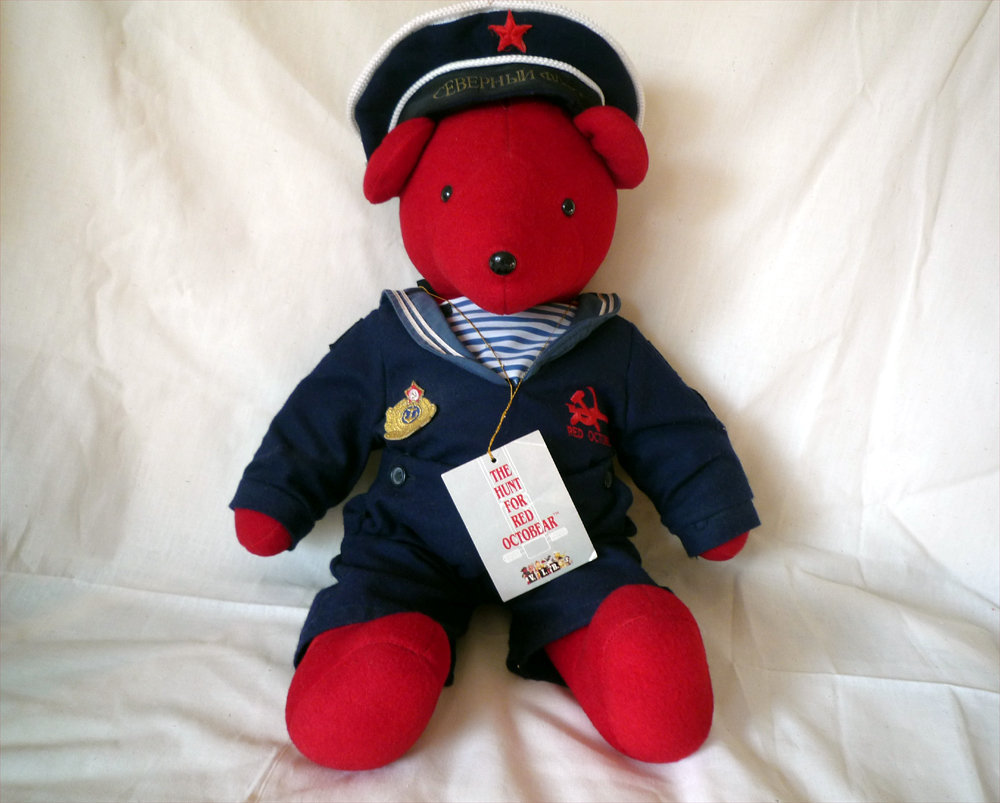I still have a teddy bear and I’m not ashamed or embarrassed about this sentimental attachment. I was two years old when I got my bear. He’s a “Red Octobear”; a red teddy bear in a Russian submarine uniform. This particular teddy bear was manufactured by the North American Bear Co. between 1990 and 1993 as a means to promote the Paramount Pictures film The Hunt For Red October (1990). I knew my bear long before I ever saw the film he was created to promote, and it would be some years before I realized that there was any connection at all. By nature I am rarely ever a nostalgic person, but happening upon my childhood “friend” the other day it occurred to me that, particularly as a child, one’s relationship to the cinema is hardly ever exclusive to the cinema itself. Often objects created or songs written for or to promote a film will color the relationship an audience will have with said film.

Consider those of my generation who grew up playing Golden Eye for Nintendo 64 before ever seeing any of the James Bond films. The slight differences in narrative between the game and the film would take on the reverse effect of the actual marketing of either since Nintendo and Rare created the game under the assumption that people would purchase their product after seeing the film. If that is not the case, a gamer familiar with Golden Eye who sees the film for the first time may well wonder why Pierce Brosnan’s Bond does not have to deal with a hostage situation aboard a yacht. And if you know the game before the film it also stands to reason that references in the game to other films in the James Bond franchise will go under appreciated (primarily hidden characters and levels from Goldfinger and Moonraker).
Objects such as Golden Eye the game, Red Octobear or the Toy Story kid’s meal at Burger King are paratexts, informing and shaping the audience’s understanding of the fictitious world presented by the film with which these objects “tie-in”. This is not unheard of or new in any way. Going back as far as the years following World War II it was not uncommon for studios to commission products like paper dolls, toys, board games, and comic book adaptations to help sell their films to audiences. But it’s only been in the last two decades that these marketing strategies have diversified with an aim at appealing to an exclusively adult demographic.
Much of this has to do with novelty and fetish properties originally designed to appeal to adult collectors of memorabilia. McFarlane Toys’ Movie Maniacs line appealed to those beyond their inherent “comic book collector” demographic with a line of detailed action figures derived from several of the biggest cult films of all time. These toys were not meant to be played with, but displayed. From there the industry for collectibles changed, expanding and reinventing itself so that today we have wine inspired by and advertising the television phenomenon Game Of Thrones.
As Hollywood continues to compete with online entertainment platforms and struggles to keep audiences going to theaters there is no doubt in my mind that this trend in marketing will expand further in its quest to appeal to adults. The lengths and breadth to which Hollywood will extend its marketing strategies will surely surpass those of Red Octobear. Though I sincerely doubt that any studio will again commission an object so innocent and naive as Red Octobear to help sell one of its blockbuster action films again.
